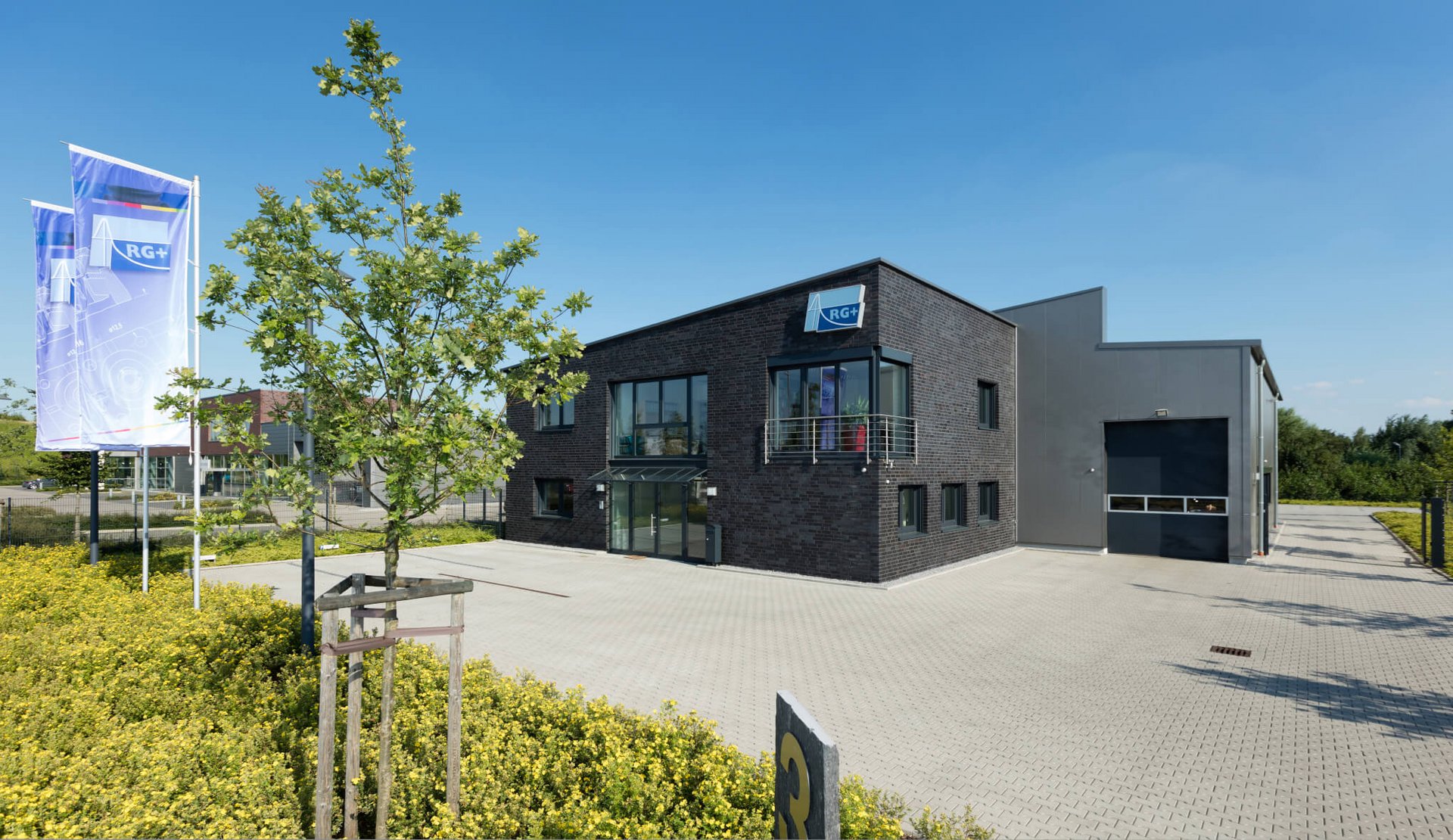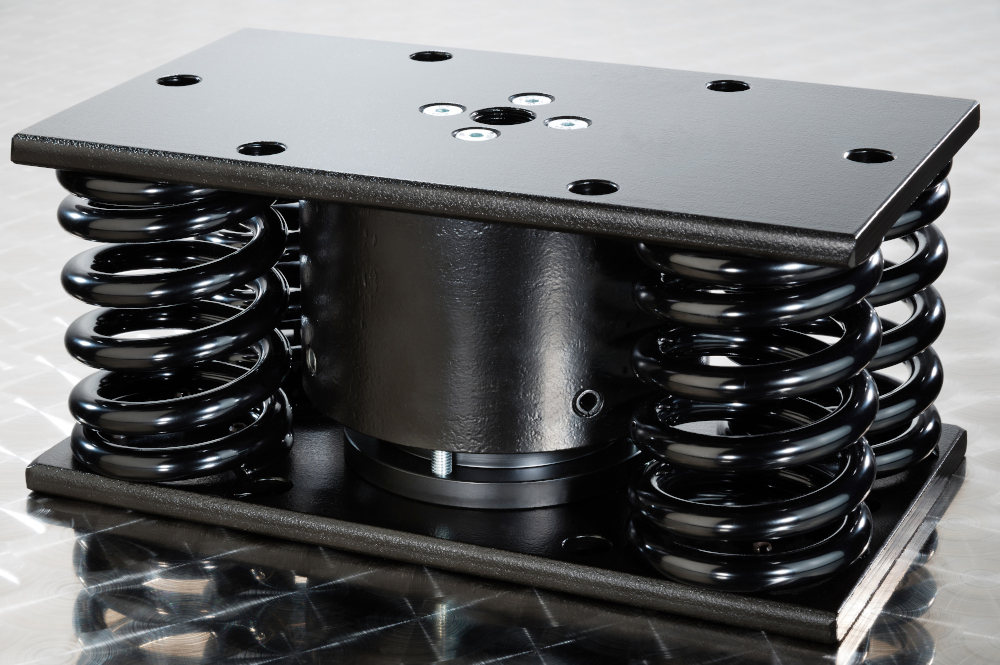In our last articles we often talked about our anti-vibration mounts made of knitted wire. As a result, you were able to gain some insight into how this type of decoupling element is structured, how it works and what forms there are. At this point we want to go one step further and see what machine feet and all the other vibration dampers can be used for.
The potential markets for vibration dampers are diverse. Spring elements are often used as active insulators for source isolation. Damping elements equipped with knitted wire can be provided for passive receiver isolation. Accordingly, spring isolators can be found to a large extent in the areas of mechanical process engineering or energy technology. Damping cushions and the corresponding damper assemblies can be found in shipbuilding or plant and vehicle construction. This is because the energy absorption capacity of spring systems is far greater than that of wire mesh. Spring isolators with integrated damping are your first choice, especially in areas with high dynamics or large active application of force, such as in parts of mechanical process engineering.
The following examples are intended to give you an insight into which element is suitable for which application in each market - but read for yourself.
Mechanical engineering and apparatus construction
This section primarily includes applications of classic mechanical process engineering. In most cases, source isolation must be carried out on the applications. The moving parts sometimes generate a very high level of energy in the system. The resulting vibrations can be isolated very well by spring systems. Typical applications for these cases are mixers, crushers, screeners or presses.
Mixer/ Crusher
In the area of mixers, the applications of spring isolators range from small laboratory stirrers to large mixers in the food industry. Regardless of the situation, the design criteria often remain the same. In the first instance, this is the weight of the machine in empty and loaded state. The speed of the stirrer as well as the number of blades and the media to be mixed are important, too. In the case of the media to be mixed, it is above all the viscosity that must be considered when selecting the spring systems. Higher viscosity fluids can lead to additional imbalances by sticking to the side edges. These can be reduced by increased rigidity or the right damping within the spring system. Finally, the indication of the overall center of gravity remains to determine the exact arrangement of the elements to be used.
The same applies to the design of crushers. Very high forces play a major role due to the existing dynamics, too. Spring isolators with integrated damping in the form of a viscous medium are the first choice in this case. This is mainly because the viscous liquid has a greater damping effect than that of knitted wire. An increase in the resonance range is thus kept as low as possible, and the general damping is improved. Depending on the application, it can also make sense to set additional radial stops in the form of horizontally attached machine feet.
Screener
The vibration-decoupling mounting of screens behaves a little differently here. While the other components listed here largely dissipate their vibrations axially, screening machines also work with radial movements. This is why lateral energy absorption is just as important as axial support. In this case, there is a very good compromise between damping in the axial and radial directions in a multi-directional damper. This type of damper covers any axis direction in a defined way and offers a long service life. You achieve a constant storage of your systems for years. An additional advantage is the independence from the loading status of your machine, since the higher rigidity of the bearing prevents or at least minimizes a tilting of the machine caused by unevenly distributed screenings.
Presses/ Stampers
It doesn't matter whether it's the small punching machine or the large press line. Punching and pressing give impacts to the environment and thus to people and machines in the immediate vicinity. It doesn't matter whether it's fast running with small strokes or a one-off stroke with great force, storage should be carried out in any case.
Depending on the application, wire meshes as well as spring insulators can be used here. If possible, however, springs are used as standard elements, as they offer higher energy isolation than pure stainless-steel mesh. Additional damping pads can be integrated into the spring system or used as tie rods to limit machine rocking.
Commercially available machine feet are often a good alternative for the storage of punching machines or high-speed machines. With two or three damping pads arranged one above the other, they achieve a spring deflection that enables adequate energy absorption. This enables good storage of your application that is constant over the years and therefore inexpensive.
Ship-building
As you can read on our industry page, another large area where anti-vibration mounts are used, is shipbuilding. While stationary applications are primarily stored in the mechanical and apparatus engineering described above, in shipbuilding these are exclusively non-stationary cases. This is the main reason why spring isolators make no sense in this area and why we basically work with knitted wire meshes made of stainless-steel. These have the great advantage of corrosion resistance, which is particularly important in maritime environment. It should be said too, that our KTL standard coating of the steel components can be replaced with a seawater-resistant coating regarding corrosion resistance.
Which applications do you need to take a closer look at and what do you consider as a bearing element? Let’s have a look.
Engines
Under stationary conditions, engine assemblies should be mounted with spring elements. Under transient conditions on board of a ship, these types of mounting doesn’t work. The top priority here is to provide tear-off protection, which is not guaranteed with standard spring isolators from RG+ Schwigungstechnik under high radial loads from transient conditions.
Because of this, such aggregates are stored using multi-directional elements of the GDZ series. The isolating effect of these multi-directional dampers is not as high as that of springs, but they still offer a very good compromise between damping capacity and bearing safety. It doesn't matter whether aggregates must be stored on inland waterway ships or on ships for the high seas.
Piping sections
In addition to the storage of engines and generators, the stabilization of the exhaust pipes is of great importance. A noise propagating through these lines, which in the worst case reaches the passenger compartments, must be prevented in any case.
Regarding the correct storage, the thermal expansion in the existing system must be taken into account, especially in the case of exhaust gas pipes. Fixed as well as floating points, supplemented by expansion joints, are to be provided for this. In our case, the series of GDZ dampers is ideal for connecting to a fixed point. Floating points can be realized using weight-bearing elements or using multi-directional dampers and sliding seats. The static load of the sections must be considered when dimensioning. In the case of pure stabilization, oversizing can make a lot of sense to keep the bearing flexible. The high temperatures in this area make it clear how important it is to use vibration dampers with high temperature resistance. Elements made of steel components still work reliably even at 300°C.
Control stations/ -cabins
The engine units described above, and the piping sections are the main components that are mounted by vibration dampers in shipbuilding. In addition to these, it makes sense to store other components such as driver's cabs or control stands. This can be done by multi-directional dampers or flange bearing connections. Flanged bearings are the first choice when space is limited, while push-pull elements are preferable when space is larger.
It becomes clear that the possible applications are numerous both in the stationary and in the transient environment. These differ above all by the pollution induced by the environment. The forces acting in shipbuilding are more unpredictable and therefore unknown, which must be considered. Spring isolators, which cannot absorb lateral forces to a large extent, should be avoided. These in turn have their strength when high energies have to be isolated from the systems in mechanical engineering.
We would be happy to advise you on our products at any time and look forward to hearing from you.
Bochum, 11/04/2023


